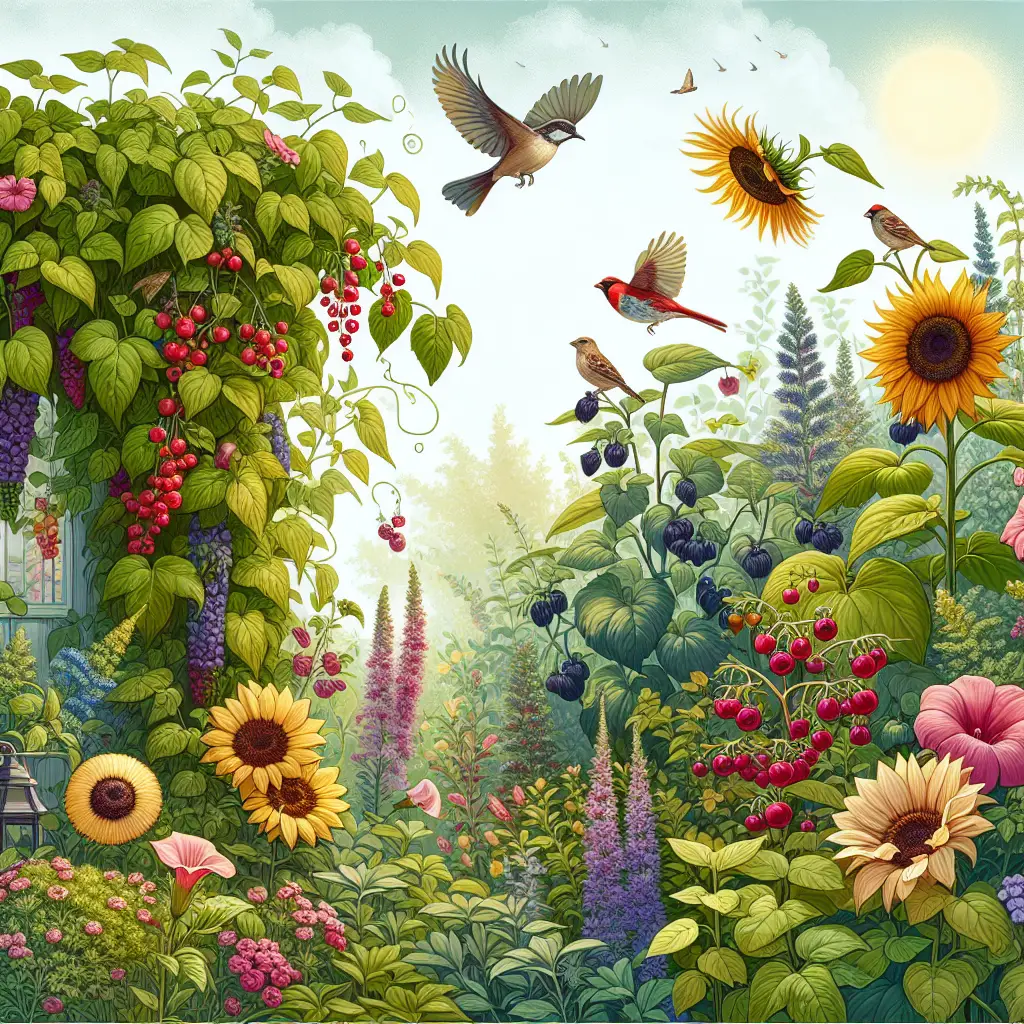Best Plants for Attracting Birds to Your Garden
Are you looking to transform your garden into a bird haven? The addition of certain plants can turn your backyard into a bustling hub of feathered friends. Here’s how you can invite nature’s melodious symphony to your outdoor space through thoughtful planting.
Understanding Avian Preferences
Birds are naturally attracted to areas that satisfy their basic needs, which include food, shelter, and nesting sites. Selecting plants that provide these essentials will significantly increase the chances that birds will flock to your garden. Fruit-bearing trees, nectar-rich flowers, and shrubs that offer cover and food are particularly enticing.
Top Plant Picks for Feathered Guests
Let’s delve into the best plants to entice a variety of birds to your backyard.
Berry-Producing Shrubs and Trees
Berry-producing plants are a favorite for many bird species. Not only do they offer a vibrant aesthetic to your garden, but they also provide a bountiful feast.
- Serviceberry (Amelanchier spp.): These early bloomers provide both spring flowers for insect-eating birds and summer berries that attract a host of bird species, including robins and waxwings. The Audubon Society recommends serviceberries as one of the top plants for attracting birds.
-
Flowering Dogwood (Cornus florida): This stunning tree is not just eye-catching for humans; its autumn berries are irresistible to birds such as cardinals and blue jays.
-
American Holly (Ilex opaca): With its bright red berries, American Holly provides winter sustenance for birds like the Eastern Bluebird and the American Robin, especially when other food sources are scarce.
Nectar-Rich Flowers
Hummingbirds and other nectar-sippers are drawn to brightly colored, tubular flowers.
- Bee Balm (Monarda spp.): This flower, as its name implies, is a magnet for pollinators and hummingbirds alike.
-
Trumpet Vine (Campsis radicans): With its large, trumpet-shaped flowers, this vine is particularly alluring for hummingbirds. Be cautious where you plant it, however, as it can become invasive. Here’s a handy guide on Trumpet Vine care from The Spruce for more details.
Seed and Nut Providers
For seed lovers like finches, sparrows, and titmice, consider plants that offer a buffet of seeds.
- Sunflowers (Helianthus annuus): Easy to grow and maintain, sunflowers offer substantial seeds that are highly prized by birds. The National Wildlife Federation lauds them as “the perfect bird magnet.”
-
Oak Trees (Quercus spp.): Acorns are not just for squirrels! They are a valuable food source for birds such as woodpeckers, jays, and nuthatches.
Plants for Shelter and Nesting
Providing a safe refuge is equally important as food.
- Eastern Redcedar (Juniperus virginiana): Dense foliage offers excellent coverage while also yielding juniper berries for a tasty bird snack.
-
Shrubby St. John’s Wort (Hypericum prolificum): This native shrub provides shelter and also attracts a variety of wildlife with its flowers and seeds.
Attracting Birds All Year Round
By balancing your plant selection, you can provide resources for birds throughout the different seasons:
- Spring: Flowering plants such as Lilacs (Syringa vulgare) and flowering fruit trees not only look stunning but provide a food source for migrating birds arriving in your garden.
-
Summer: Continue providing fruit from plants such as Raspberry (Rubus idaeus) and perennial favorites like Coneflower (Echinacea spp.).
-
Autumn: Berries from plants such as Viburnum (Viburnum spp.) and nuts from trees like Hickory (Carya spp.) give birds a fattening feast for the cooler days ahead.
-
Winter: Don’t forget winter-friendly plants like Bayberry (Myrica pensylvanica) and evergreens that offer both food and cover in the coldest months.
Creating Bird-Friendly Habitats Beyond Plants
While selecting the best plants is crucial, consider adding water features or bird baths that provide clean drinking water and serve as a spot for birds to bathe. These additions can make your garden an oasis for winged wildlife.
Remember to provide nest boxes and leave some natural areas in your garden undisturbed to facilitate nesting. The Cornell Lab of Ornithology provides guidelines on how to set up birdhouses correctly.
Combining Passion with Purpose
Your passion for gardening can dovetail beautifully with conservation efforts. By choosing native plants, you aid in sustaining local ecosystems and bird populations. As you start planting these bird-friendly varieties, consider sourcing from local nurseries or engaging with community groups focused on native plant propagation.
Embrace the joy birds can bring to your garden by considering one of these bird feeding stations available on Amazon. Watching birds enjoy your carefully selected plants, and perhaps a well-placed feeder, will offer endless enjoyment and satisfaction.
By following these tips and planting a diversified selection of trees, shrubs, and flowers, you will be rewarded with a garden that is not only aesthetically pleasing but also abuzz with the natural activities of its avian visitors. Happy birdwatching, and happy gardening!

